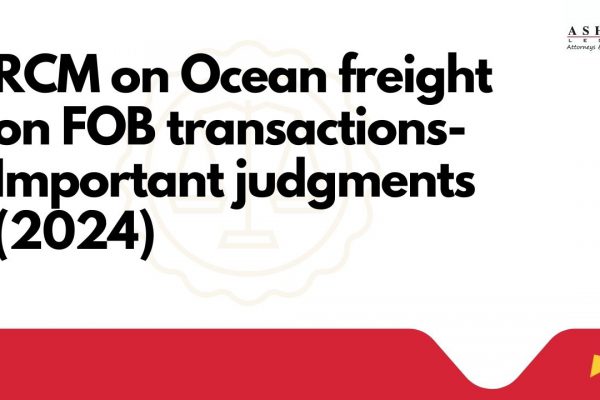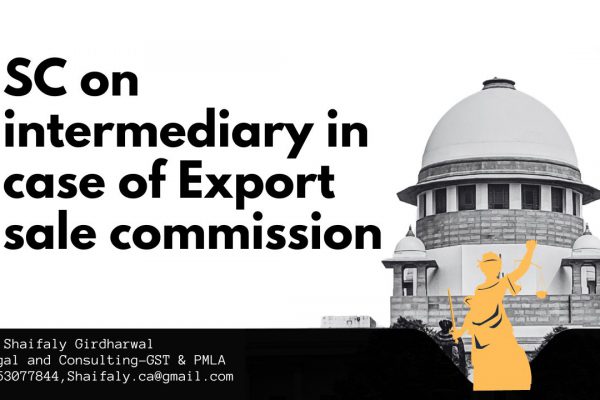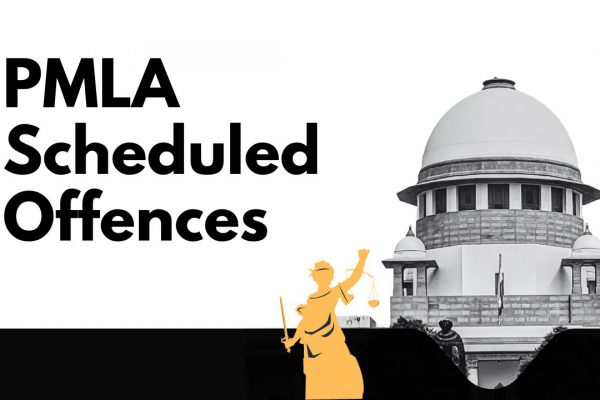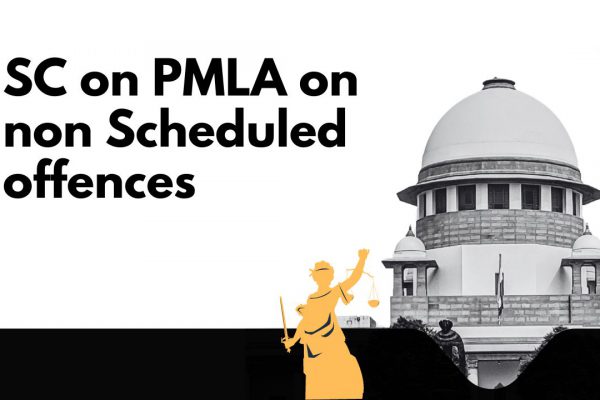GST Audit – Some Basics
GST Audit – Some Basics
Source: ICAI
We thank CA Vasant Bhat, Mumbai for drafting this article and CA S Venkataramani, Bangalore & CA. Ashok Batra, Delhi for reviewing the same. Feedback on the article may be sent at idtc@icai.in.
Introduction
1.1 The concept of the audit by a Chartered Accountant in the area of Indirect Taxes was confined to State Value Added Tax and Central Sales Tax laws of certain States. In Central Excise and Service tax only in case of suspicion of undervaluation or excessive credit special audits were prescribed (not much used) which continue in GST. Therefore, Chartered Accountants engaged in rendering professional services in the areas of State taxes would be familiar with those provisions. The GST law has subsumed several Indirect Tax laws – among others, it subsumed Central Excise, Service Tax, Luxury Tax, Entertainment Tax, VAT/CST, Entry tax laws etc.; certain levies under the Customs laws have also been subsumed into the GST laws.
1.2 It would be relevant to note that the skill sets acquired in the understanding of the statutes that have been subsumed into the GST laws would help in better understanding of the GST laws since several provisions of the Central and State enactments have been replicated (fully or partially) in the GST laws – say, for instance, the provisions of Place of Supply of Services, Time of Supply of Services, Valuation of Supply Rules, etc. That being said, one needs to exercise caution in reading and understanding the subtle departures or changes in the statute in comparison with the erstwhile legislations, in which case, one has to enhance the understanding of the fully taken forward provisions. He also needs to unlearn the old laws and learn the GST laws afresh for a complete understanding of the taxing statute.
1.3 In terms of Section 2(13) of the CGST Act, 2017, “audit” means the examination of records, returns and other documents maintained or furnished by the registered person under this Act or the rules made thereunder or under any other law for the time being in force to verify the correctness of turnover declared, taxes paid, refund claimed and input tax credit availed, and to assess his compliance with the provisions of this Act or the rules made thereunder.
1.4 The following three types of audits are envisaged under the GST laws:
The first type of audit is to be done by a chartered accountant or a cost accountant;
The second type of audit is to be done by the commissioner or any officer authorized by him in terms of Section 65 and 66 of the CGST Act, 2017 read with Section 20 of the IGST Act, 2017 and Section 2 of UTGST Act, 2017.
The third type of audit is called the Special Audit and is to be conducted under the mandate of Section 66 of CGST Act, 2017 read with Rule 102 of CGST Rules, 2017.
This write-up has not taken into consideration an audit in terms of Section 65 / 66 of the CGST Act, 2017.
1.5 While the GST regime emphasizes self-assessment processes, the complexities involved in the new statute make one wary. At this juncture, it is clear to tax professionals that the GST law is not presently simple enough for an assessee to compute his total and taxable turnovers and duly report the same, under the new statute.
1.6 The new statute lays substantive emphasis on e-governance. It is presumed that over a period of time, the complexities of the GSTN and the GST law would be subject to several changes/amendments to enhance ease of compliance and transparency. Several errors occurring in the GSTN while attempting to furnish the details are brought to the attention of the registered persons almost immediately, owing to the use of extensive technology. Examples:
– Transitional credit claims being processed with the error in case of mismatch in GSTIN;
– The discrepancy between the amount of credit/cash being utilized to offset the liability;
– Duplication of invoices.
1.7 Nevertheless, errors that cannot be traced by the system are bound to have been committed by registered persons while filing the returns. It is also a fact, that GST law is in the process of being properly interpreted and understood by each of us. The difficulty also arises on account of the fact that there are no precedents on each such issue. One has to overcome these intricate issues by properly understanding the nuances of the law which is still evolving.
1.8 The Revenue, with the aid of information technology, is expected to identify patterns/spike in liability, credits, reconciliations through online tools/resolutions and intelligent reporting.
1.9 The level of tax compliances prevailing and the complex nature of tax laws in our country makes it necessary for the audit of records under various laws. Therefore, in order to ensure tax compliance by the assessee, the GST law provides for audit by the tax department and by professionals in certain cases.
1.10 Ordinarily, the smaller assessees do not prefer to get their books of account and records audited for indirect tax compliances, when there is no mandatory requirement to do so. However, larger entities who wish to avoid any disputes opt for caution checks. The audit is perceived as a cost rather than as a tool in identifying errors or to optimize the tax incidence though it can actually be a value adder, directly and indirectly.
1.11 In the past, certain tax-compliant assessees have been known to voluntarily engage experts to conduct audits under the Excise or Service tax laws. The exercise was undertaken to evaluate compliance, as also to ensure that all benefits lawfully accruing to the assessees are availed by them, in good time. The financial impact on account of indirect taxes is always substantial, and therefore, those assessees who engage tax professionals for a review from the indirect tax perspective would have witnessed a great deal of value addition.
Audit Exercise-Advantages
1.12 To an assessee – Normally, the tax department conducts an audit or assessment after the close of a financial year. It is customary to expect that the departmental audit/assessment is conducted after the close of the financial year except in cases where investigations, inspections or special audits are taken up. Naturally, any levy of additional taxes either due to non-compliance or incorrect comprehension of the complex tax laws would result in taxes plus consequential interest and penalty. GST being a tax on supplies, would tend to wipe out the top line in such cases.
1.13 Given the time lag between the date of committing an error and the date of ascertaining/rectifying such error, the consequence in such situations can be quite alarming in as much as the very liquidity of an entity can be under jeopardy. This would be the scenario, even where there is no mala fide intent on the part of the assessee to evade or avoid taxes that are legally due to the Government. Consequences that can arise in respect of issues that arise on account of classification or interpretation or judicial pronouncements can be disastrous.
1.14 It is a basic fact, that no assessee would be in a position to collect such additional tax levies from customers long after the transaction stands closed. On the other hand, there may also be cases where eligible credit may not have been availed, and it cannot be claimed at a later date since it is either time-barred or claims have not been preferred through the returns.
1.15 Therefore, where a review is undertaken periodically, the discrepancies will be noticed at the time of omission/commission and corrective measures can be taken in a timely manner. Thus, it would lead to maximization of credit availment and minimization of tax / other outgoes owing to proper planning and timely compliances.
1.16 To the department / Government – The tax department / Government would also stand to benefit from a periodic review by way of receipt of information that is duly classified, correct determination of total and taxable turnovers, review of rates of taxes, proper application of relevant notifications, circulars, clarifications, Government orders and adherence to the tax compliances. The audit report would also take into cognizance the relevant judicial precedents that are applicable to the registered person. Unlawful claims for benefits / unethical tax management practices adopted by the assessees would be filtered out since tax professionals would intimate and persuade the assessees of the consequences of such practices, and also bring out the discrepancies in their reports. When audits are performed by tax experts, the time spent by the tax authorities on the scrutiny would be minimized, thereby allowing them to utilize the available time for more meaningful and productive purposes. Voluntary compliances by the assessee would encourage the department / Government to simplify the law and procedures and develop a mechanism for ease of doing business. It would be a win-win situation.
1.17 To the professionals – Tax Professionals are compelled to conclude the audits (mandated by statutes) in a time-bound manner within a fixed period of time.
However, where auditees engage them to carry out periodic reviews voluntarily, the said tax professionals will be in a position to deploy experts and spend adequate time and efforts, in order to go through the records and documents in detail. This will help them to better understand the operations of the auditee, resulting in value addition. Instead of carrying out the audit at the end of the year, for all the assessees, a periodic audit will help the auditee in understanding the short-comings that can be duly adhered to within time and would, in a way, avoid any further consequences.
Preparation for GST Audit
2.1 The GST Audit would be undertaken for the first time, and therefore, demands significant preparation from both the auditor and the auditee. While the statutory audit (under the Companies Act, 2013) and tax audit (under the Income Tax Act, 1961) primarily rely on the financial records, the GST audit would require coverage of a larger cluster of records. The GST audit requires deep understanding of the GST laws, IT infrastructure of the auditee, the method in which the GST portal operates, applicability of the various notifications, circulars, clarifications, classification of goods and / or services, the nature of supplies, the manner of availment of credits together with its allowability or otherwise, maintenance of various records and documents specified therein, requirements of reporting and source of information, understanding of the business of the auditee etc. Apart from these issues, it is imperative that an auditor understands the basic functioning of the e-governance model. The audit coverage of all these records and documents would need the substantial amount of preparation and time.
2.2 To start with, the following (among others) are the various steps an auditor can take in connection with the forthcoming GST audit:
a. Inform the concerned assessee about the applicability of GST audit;
b. Confirm the eligibility to be the GST auditor under the related legislation and the guidelines issued by ICAI;
c. Understand the nature of business, the products or services, requirements of records to be maintained, and advise the auditee to maintain the accounts and records so required, beforehand;
d. Prepare a questionnaire to understand the operations/activities of the auditee, and specifically develop questions on those issues on which the GST law would have a bearing;
e. Preparation of the detailed audit program and list of records to be verified;
f. The host of relevant reconciliations.
Audit under GST laws – Relevant Statutory Provisions
3.1 It is important to understand the relevant audit provisions under the GST laws – such as, whose accounts are to be audited, who can undertake a GST audit, what are the regulations of ICAI applicable to the GST auditor, the procedure for appointment, scope and preparations required, etc.
3.2 Class of registered persons liable for GST Audit: Every registered person whose aggregate turnover during a financial year exceeds the prescribed limit of Rs.2 Crore is liable to get his accounts audited by a Chartered Accountant or a cost accountant. The phrase ‘aggregate turnover’, as defined in Section 2(6) would mean the all-India PAN-based turnover for the financial year (inclusive of exports, inter-State supplies, exempt supplies, stock transfers, etc. but exclusive of GST and compensation cess).
Note: The appointed date for effective implementation of the provisions of the GST laws is 01.07.2017, i.e., from the second quarter of the financial year 2017-18. Therefore, the very applicability of the threshold limits for audit purposes, whether wholly (Rs.2 Crore) or in proportion, has not been explicitly provided for – Clarification from the Government is awaited.
3.3 Filings upon GST Audit: The registered person shall submit a copy of the audited annual accounts, the reconciliation statement (reconciling the value of supplies declared in the return furnished for the financial year with the audited annual financial statement), in FORM GSTR-9C and other documents as may be prescribed, on the GST Common Portal.
3.4 The detailed Rules/guidelines regarding the audit procedures and the Audit Report format etc. are yet to be prescribed/notified. In the absence of these, one may only prepare the audit manual/audit program, and cannot finalize the scope of the audit in totality. Given that the law is evolving and further changes could be expected (over 300 Notifications + several FAQs, Orders, Circulars, clarifications, flyers, press releases & tweets), making it difficult for businessmen to comply, they would be well-advised to take a lead and commence with periodic reviews to ensure compliance and speed up the first-time audit process..
Assessees whose accounts are to be audited
5.1 The Chartered Accountants Act, 1949
Section 2(1)(b) – a “chartered accountant” means a person who is a member of the Institute.
Section 2(2) – a member shall be deemed to be in practice if he engages himself, for a consideration, in the specified activities, which includes inter alia audit.
Section 6 provides that a member cannot practice without obtaining Certificate of Practice
Thus, only a member of ICAI having a Certificate of Practice (COP), or a firm of Chartered Accountants can take up the GST Audit. Additionally, a Chartered Accountant must bear in mind the following:
Member in part-time practice (including an employee having a COP) is not entitled to perform attest function. (242nd Council Meeting Resolution);
The Member having the substantial interest in an assessee cannot take up its audit. (Clause 4 of Part I of the Second Schedule of the Chartered Accountants Act, 1949 (“the CA Act”) read with Appendix 9 of CA Regulations 1988);
Member responsible for writing/maintenance of books of account of an assessee should not take up its audit (Clause (4) of Part I of the Second Schedule to the CA Act);
Member not to accept the audit of a person to whom he is indebted for more than Rs. 10,000/- (Chapter X of ICAI Guidelines);
Member not to charge professional fees based on a percentage of profit or which are contingent upon the finding or the result of the professional employment. (Clause 10 of part I of the First Schedule to the CA Act);
The internal auditor of an assessee cannot be appointed as his tax auditor (281st Council Meeting Resolution).
In case of joint audits, all the auditors will have to sign the audit report and should issue separate reports where they have different opinions. (Ref SA 299).
5.2 The restrictions applicable for appointment of a statutory auditor where the fee for other services are more than the statutory audit fee, in case of specified entities, are not applicable GST auditors (Chapter IX of ICAI Guidelines).
5.3 An assessee may have GST registrations in more than one State. In such cases, the assessee may appoint a single/multiple auditor(s) for the distinct registrations under the same PAN. It is possible that accounts and records that are kept in different States may be in the local language of that State. In such cases, it is suggested that the auditor should not accept the audit of accounts written in a language which he / his staff do not understand.
Audit Engagement
6.1 In case of a company, the appointment of the GST auditor should be made through a resolution of the Board of Directors or by an officer of the company, if so authorized by the Board in this behalf. In case of a partnership firm or proprietary concern, the appointment can be made by a partner or the proprietor or a person authorized by the assessee. The acceptance of appointment should also be communicated in writing to the auditee.
6.2 Communication with the previous Auditor – Since the GST audit is applicable for the first time (for the financial year 2017-18), the requirement of communication with the previous auditor prior to accepting the engagement (based on the provisions of the CA Act) does not arise. However, as a healthy practice, the GST auditor may choose to communicate with the previous auditor (under the erstwhile provisions of State Level Laws) so as to get a better insight into the auditee’s business practices. Such communication would, however, become mandatory in the subsequent years (where the retiring auditor is a Chartered Accountant).
Submission of Audit Report
7.1 Section 35(5) read with Section 44(2) of the CGST Act provides that the following documents shall be furnished electronically by the assessee upon conclusion of the audit:
a. Annual Return;
b. Copy of the audited annual accounts;
c. Reconciliation statement, reconciling the value of supplies declared in the return furnished for the financial year with the audited annual financial statement in FORM GSTR 9C (this FORM is expected to undergo some simplification), duly certified;
d. Such other particulars, as may be prescribed.
7.2 A format for the audit report/certificate is yet to be notified. It is not clear as to whether it will be in the nature of an audit report like the statutory audit report or tax audit report, or a certificate like in case of VAT audits. If it is in the nature of a certificate, the responsibility of the GST auditor would be substantially higher.
7.3 Certificate Vs. Report – Para 2.2 of the ‘Guidance Note on Audit Report and certificates for Special Purpose’ issued by the ICAI notes the difference between the term ‘certificate’ and ‘report’ as under;
“A Certificate is a written confirmation of the accuracy of facts stated there in and does not involve any estimate or the opinion.”;
“A Report, on the other hand, is a formal statement usually made after an inquiry, examination or review of specified matters under report and includes the reporting auditor’s opinion thereon”.
7.4 Thus, where a certificate is issued, the Chartered Accountant shall be responsible for the factual accuracy of what is stated therein. In case of a report, he is responsible for ensuring that the report is based on the factual data, true and fair (or in some cases true and correct) to the best of his belief, knowledge, and information furnished to him.
7.5 Annual Return: Every registered person [other than an input service distributor (ISD), person required to deduct tax at source (TDS), person required to collect tax at source (TCS), casual taxable person (CTP) and non-resident taxable person] shall furnish an annual return for every financial year electronically in the FORM GSTR-9 (composition suppliers in GSTR-9A and e-commerce operators in FORM GSTR-9B) on or before 31st December following the end of the financial year. Where a registered person is required to get his accounts audited, such annual return shall be furnished along with the audited accounts.
7.6 On a plain reading of the relevant the provisions, it appears that the annual return is not merely the sum total of the periodic returns filed for the year, but a return reflecting the correct turnovers, data and details as per the provisions of the GST laws, based on the annual accounts of the assessee. Where it is required to be audited, the turnovers appearing in the annual return shall be as per the audited figures.
7.7 Reconciliation statement – Rule 80(3) provides that the reconciliation statement shall be furnished in the FORM GSTR-9C (format yet to be notified). The provisions of Section 44(2) require reconciliation of the figures declared in ‘return furnished for the financial year’ with the ‘audited financial statement’. It appears that the return furnished for the financial year refers to the annual return furnished.
7.8 During the course of the audit, any discrepancies found shall be corrected/rectified by declaring the correct turnovers in the annual returns. In this regard, it may be noted that the time limit for declaring the details of debit note/ credit note and for taking the input tax credit would lapse in September of the following year, whereas the annual return can be furnished by the end of December of the following year. Where any discrepancies are noted during the course of the GST audit post-September, it appears that no recourse would be available to the auditee.
7.9 There would be a challenge in the reconciliation process in case of large entities having registration in multiple States/UTs, since many transactions on which GST has an impact may not have direct visibility in the financial statements.
E.g. Stock transfers, free supplies, distribution of free samples, gifts, transactions with related persons, supplies without consideration, goods sent on approval basis, supplies through agents, etc.
7.10 The auditor must note that the reconciliation statement can be prepared only when the audited financial statements are made available. The law, however, does not explicitly provide that the reconciliation must be prepared between the accounts audited by him and the annual return, in case of registered persons whose books of account have not been audited, say, in the case of non-company assessees.
7.11 Such other particulars, as may be prescribed – The Government is yet to prescribe the format of audit report and annexures thereto. It is also not clear as to whether the auditor is required to identify and report the discrepancies month-wise or annually.
Accounts and Other records
8.1 Every registered person shall maintain the details of input tax credit (ITC) availed, stock of goods – in value and quantity with description of inflow and outflow, production / manufacture of goods, inward and outward supplies of goods and/or services including imports and exports, supplies attracting tax on reverse charge, details of advances paid / received, output tax payable and paid, etc. along with the relevant documents such as invoices / bills of supply / delivery challans / credit notes / debit notes / receipt vouchers / payment vouchers / refund vouchers.
8.2 The registered person shall also maintain the names and complete addresses of suppliers and recipients, and the complete address of the premises where goods are stored (including goods stored during transit). Goods found at a place other than so declared without a valid tax invoice could be treated as a taxable supply. Also, any record belonging to a registered person found at any premises other than those declared shall be presumed to be maintained by the said registered person unless proved otherwise.
8.3 The details contained in the records are expected to be true and correct. Entries therein shall not be erased/ effaced/overwritten, and all incorrect entries, otherwise than those of clerical nature, shall be scored out under attestation and thereafter the correct entry shall be recorded and where the registers. In case of electronically maintained records, a log of every entry edited / deleted shall be maintained.
8.4 Such records are required to be maintained at the principal place of business (as appearing in the certificate of registration), and in case of additional places of business specified in the certificate, the records must be maintained in the respective places. The registered person is also permitted to maintain the records in electronic form.
8.5 Every owner or operator of warehouse / godown / other storage spaces, and every transporter, shall maintain records of the consigner, consignee and other relevant details of the goods, even if he is not a registered person.
8.6 Every registered person manufacturing goods shall maintain monthly production accounts showing quantitative details of raw materials or services used in the manufacture and quantitative details of the goods so manufactured including the waste and by-products thereof.
8.7 A registered person supplying services shall maintain the accounts showing quantitative details of goods used in the provision of services, details of input services utilized and the services supplied.
8.8 A registered person executing works contract shall keep separate accounts for works contract showing the names and addresses of the suppliers and the persons on whose behalf the works contract is executed, the details of description, value and quantity of goods or services received and utilized for the execution of works contract, the details of payment received.
8.9 Where records are generated and maintained electronically, proper backup is to be maintained and preserved, and shall be authenticated using a digital signature. On demand by the officers, the registered person shall give the electronic record file with the password.
GST Audit program
9.1 In the absence of any prescribed format for reporting of information to be furnished after the audit, preparation of the GST audit program would not be complete. However, based on past experience in audits, and considering the applicable provisions of the GST laws, one can start preparing the audit program and finalize the same once the reporting requirements are notified.
9.2 The audit program may be prepared considering the various aspects to be covered in the report, i.e., checks to be performed to verify the following:
Whether the books of account and related records maintained are sufficient for verification of the correctness, completeness and accuracy of the returns;
Whether the annual return filed reflects the correct figures and includes all the transactions effected during the year that require disclosure;
Whether the value of outward supplies, and inward supplies declared in the annual return includes all the outward supplies and inward supplies, respectively, effected during the year;
Whether the inclusions and exclusions to / from the value of supply are in accordance with the provisions of the law;
Whether the exemptions claimed in the annual return are in conformity with the provisions of the law;
Whether the amount of ITC determined as eligible and ineligible have been determined in accordance with the provisions of the law;
Whether the classification of outward supplies, rate and amount of tax thereon, and nature of tax, is correct;
Whether the other information given in the return is correct and complete.
9.3 Further, other relevant information which the audit program should cover are listed as follows:
General profile and brief nature of the industry/ business of the assessee;
Registration details, additional places of business, registrations in other States, details of authorized signatories / persons in charge;
List of accounts and records maintained, and information on software used;
Details of outward supplies, exports, supply to SEZ, tax paid under RCM, supplies without consideration, etc.;
Details of outward supplies involving works contracts, composite supplies, mixed supplies and continuous supplies;
Provisions of time and place of supply of all outward supplies of the auditee;
Determination of transaction value and value of supply in accordance with the Valuation Rules;
Compliance with the conditions for availment of credits, proportionate credit availed, ineligible credit reversal, payment to suppliers, etc.
Details of goods sent for job work and receipt of the same along with details of the process/treatment carried out during the job work;
ISD and cross charging;
Details of exemptions claimed and compliance with the conditions therein;
Payment of taxes and refunds claimed, compliance with related conditions;
Departmental correspondences, notices and related compliances;
Relevant applicable standards/ guidance notes as available; and
The major analytical ratios.
Understanding the business of the auditee:
The GST audit casts a huge responsibility on the auditor, and it is very important that the auditor is aware of the nature and complexity of the business/operations of the auditee. When an auditee approaches a Chartered Accountant for the first time, he must exercise due caution in assessing how compliant the auditee is, from a GST stand-point. It may be advisable that he prepares a suitable standard questionnaire (depending on the nature of business and facts and circumstances of each case) in order to become familiar with the business, modus operation of operation etc. It must also be noted that a long / complicated questionnaire may not be effective, even if prepared with a view to obtain a comprehensive understanding. The auditor may obtain a brief from the auditee on the questionnaire to get the best results.
Special attention to transactions not appearing in the financial accounts:
There are several transactions which may not appear in the financial accounts and records maintained by the registered persons such as stock transfers, free samples, services received from outside India from related parties, other supplies made without consideration, etc. Due care must be exercised by the auditor to identify such transactions as there may be no direct reference to these transactions in the financial records.
Use of Software:
The systems, processes, and controls put in place by the business entity will largely define the scope of the auditor in conducting an audit, in assessing the risks of the audit as well as for planning the audit. It is important for auditors to be conversant with various software. Many a time, the islands of information do not talk to each other and present different values.
Different software tools are available for conducting an audit, and the one appropriate to the auditee must be chosen based on nature of the audit and size of the auditee. While selecting the software or software tool, the auditor must check on whether the same is updated with the latest amendments. Since the audit under the GST laws is being carried out for the first time, the auditor must be attentive to the possible errors that could arise while using the software.
Challenges for the year 2017-18:
There would be many challenges that an auditor as well as an auditee will have to face while carrying out the GST audit for the financial year 2017-18, being the first year of GST audit. Among others, some of them are listed below:
a. Multiple audits under indirect tax laws: VAT audits may be required to be carried out for the first quarter and GST audit for the next three quarters;
b. Lack of clarity in the GST law, frequent changes in the law, issuance of more than 300+ notifications;
c. Failure of the matching concept – whether it would be possible to identify if the supplier has failed to remit taxes to determine eligibility of credits;
d. Complex procedural compliance under GST;
e. Reliability of the audit software is not tested;
f. Absence of / incomplete mandatory records;
g. High volume of procedural lapses and non-compliances by the assessees, incorrect documents/documentation procedures;
h. Transitional issues (the law does address all types of transactions).
Consequence of failure to submit the annual return:
Section 47(2) provides that in case of failure to submit the annual return within the specified time, a late fee shall be leviable – Computation: Rs. 100 per day during which such failure continues subject to a maximum of a quarter percent of the turnover in the State/UT.
There is no specific penalty prescribed in the GST Law for not getting the accounts audited by a Chartered Accountant or a Cost Accountant. Therefore, in terms of Section 125 of CGST Act, 2017 he shall be subjected to penalty up to 25,000/-. This section deals with the general penalty and gets attracted where any person, who contravenes any of the provisions this Act or any rules made thereunder for which no penalty is separately provided.
Suggested reference material – ICAI:
The Institute, being the supreme regulatory body on accounts, audits and financial reporting, provides all the information on these aspects. The following are some of the important provisions, documents, which every auditor must go through:
If you already have a premium membership, Sign In.
 ConsultEase Administrator
ConsultEase Administrator
Consultant
Faridabad, India
As a Consultease Administrator, I'm responsible for the smooth administration of our portal. Reach out to me in case you need help.


























